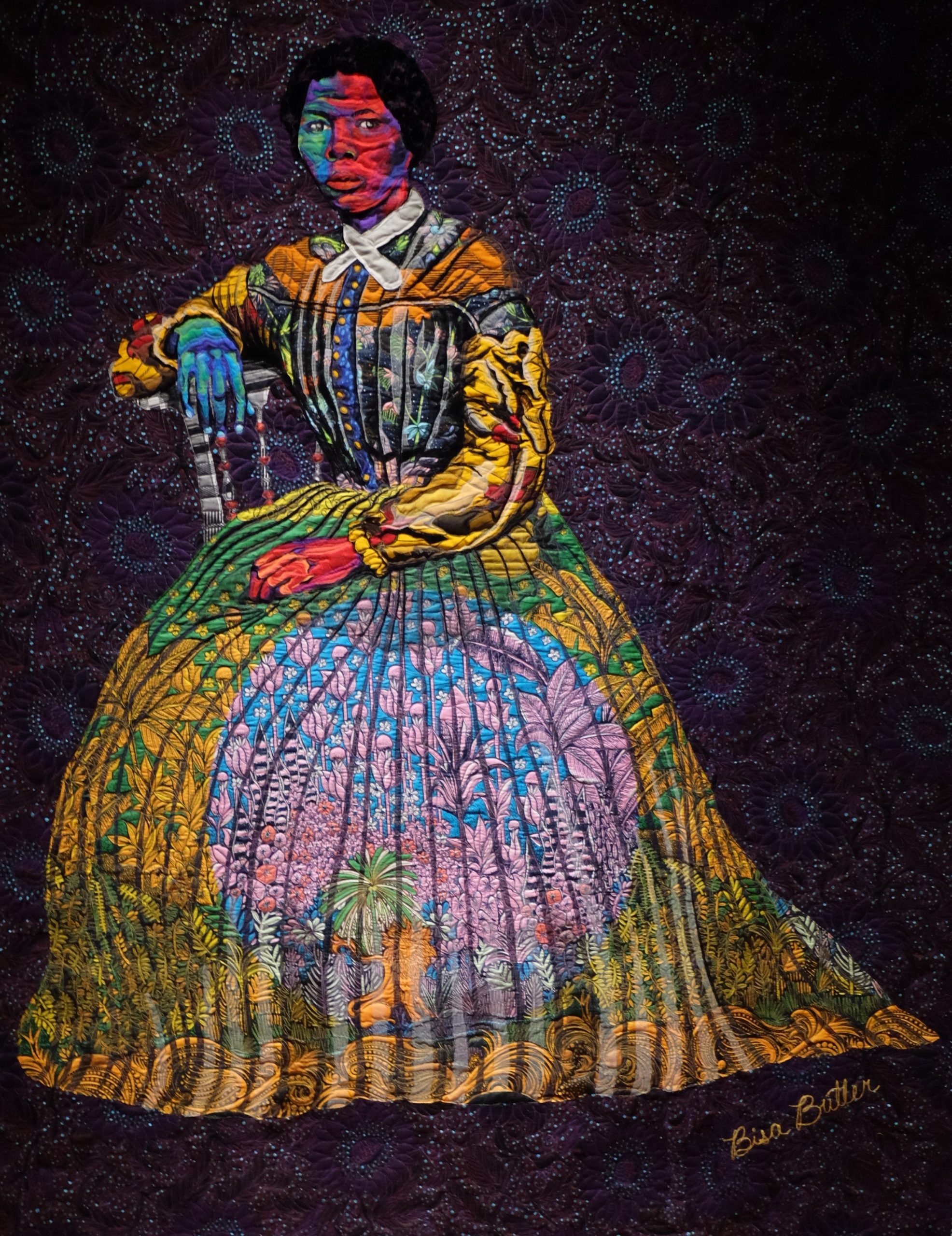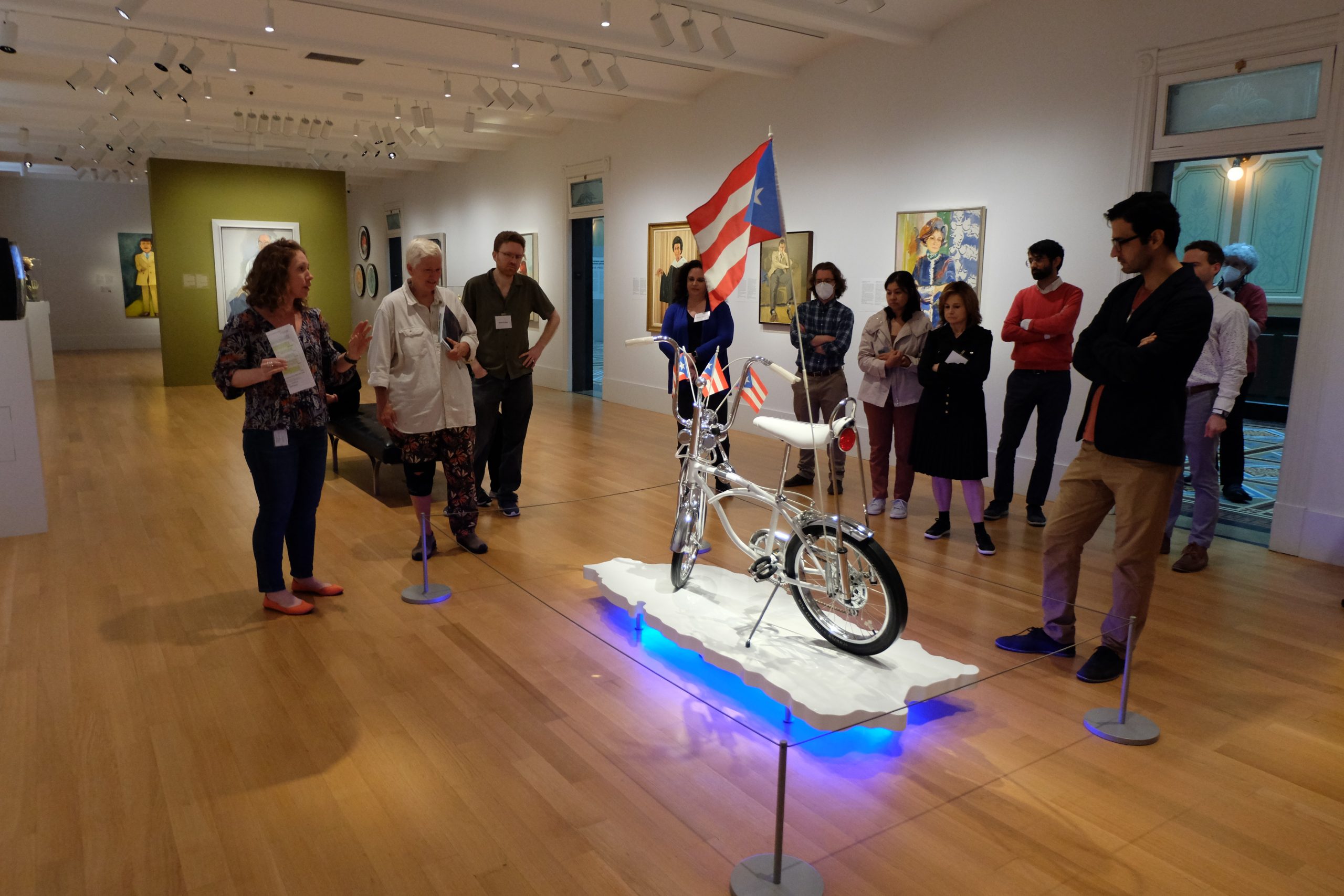When I last visited the National Museum of African American History and Culture, I started…
After a month spent exploring museum learning in light of the 2022 theme, “Social Justice in the time of Pandemic: The Hurdles Behind, the Urgency of Now, and Moving Forward after Covid,” the 2022 Smithsonian Faculty Fellows museum seminar series kicked off with the Opening Panel as is tradition. We were fortunate to have five Smithsonian curators and educators discuss how the Smithsonian is addressing issues of social justice in the time of pandemic, and the ways in which our students can benefit from the museum’s various initiatives..
Dr. Ariana A. Curtis, the inaugural Director of Content for the Smithsonian’s Our Shared Future: Reckoning with Our Racial Past initiative, and curator of Latinx Studies at the National Museum of African American History and Culture began the afternoon. Dr. Curtis explained that the goal of Our Shared Future: Reckoning with Our Racial Past is to provide a safe and collaborative space for dialogue about race where all can share their experiences and deepen their understanding of the legacy of race and racism. She reminded us that everyone has a racialized identity, and that racism exists on a global scale. The initiative is attempting to address race in the context of place, wealth, policy and ethics, arts and aesthetics and health and wellness. To move forward there needs to be a sense of collective responsibility. How did we get here? How do we move forward? were questions the Fellows were asked to address, and a lively discussion resulted.
Andrea Jones , Associate Director of Education at the Anacostia Community Museum (ACM) spoke next, focusing her presentation on the idea of a “Museum in the Streets” based on a philosophy of the need for museums to extend beyond their walls and into public spaces. The pandemic created a need to connect and address current community issues of the population the museum serves. This led to an initiative titled Free the Museum, and the creation of a four-person Street Team whose work uses the tools created by the initiative. The team is guided by the recognition of the need and value for museums to take their work to the streets, and activate everyday places as places of engagement where learning, reflection and healing can take place. Fellows were quick to realize that creating opportunities for connections in unexpected places provides a more accessible and inclusive opportunity for public engagement and reduces barriers for engaging with museums.
Our third speaker, Ashleigh Coren, is the Acting Head of Education for the Smithsonian American Women’s History Initiative and the Women’s History Content and Interpretation Curator at the National Portrait Gallery NPG). She noted that women’s contributions have been largely absent from the traditional American history narrative we are all familiar with, reminding us of how much has been lost with the absence of representation. She shared the work she has been doing with high school students, which is being used to inform the upcoming virtual series, Engaging Fearlessly. The aim of this series is to explore the impact of Black, Indigenous, and women of Color in American history. Fellows were able to explore the Smithsonian’s American Women’s History Museum website, and given ideas about ways to encourage their students to value and share their own stories.
She was followed by Ranald Woodaman, National Museum of the American Latino’s Exhibitions and Public Programs Director. He introduced the group to the Molina Family Latino Gallery, which will be the Smithsonian’s first gallery dedicated to Latino contributions to the United States and will serve as the preview of the National Museum of the American Latino. The gallery will be housed at the National Museum of American History, and opens this year with the inaugural exhibition, ¡Presente! A Latino History of the United States. This exhibit will begin the process of introducing visitors to critical concepts, moments, and people that are part of the historical and cultural legacy of Latinos in the U.S. While the date of opening has not been set, a robust website provides an overview of and resources for contemplation and understanding.
One of the advantages of our virtual seminars is having the opportunity to meet with curators who are not located in the Washington, D.C. area. Our last presenter, Healoha Johnston lives in Kaiwiki, Hawai‘i, and is a Curator of Asian Pacific American Women’s Cultural History at the Smithsonian Asian Pacific American Center (APAC). Her presentation was focused on describing how the APAC works to expand narrative possibilities by “infusing Smithsonian with Asian Pacific American worldviews concerning gender and social context pertaining to the museum’s permanent collection.” Using the story of Queen Liliʻuokalani she spoke to the importance of including these stories and of the process of working with the Curatorial and Education departments in setting acquisition priorities.
Throughout the afternoon resources were shared and Fellows and presenters had the opportunity to engage in meaningful discussion about themes that emerged across presentations. The afternoon was a wonderful start to the seminar series.





This Post Has 0 Comments